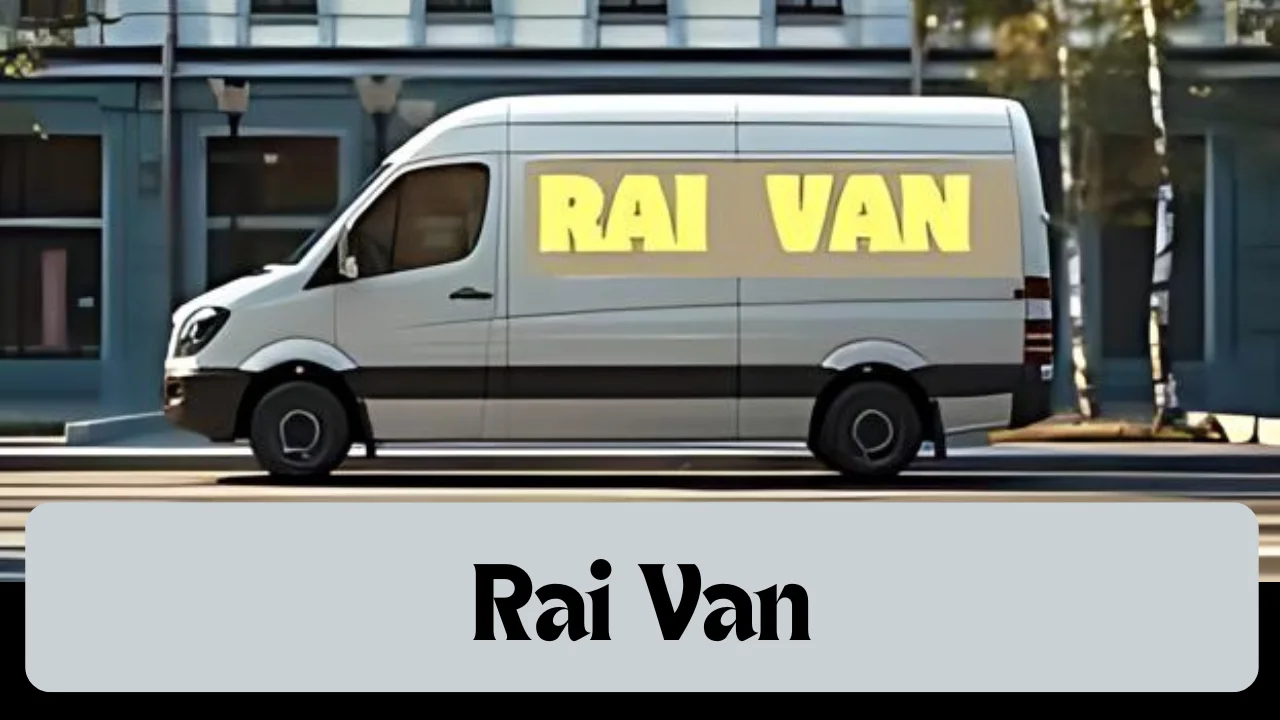The term “Rai Van” has its origins in both long-standing customs and cutting-edge science and technology. This complex idea represents adaptability, sustainability, and innovation in a wide range of contexts, from conventional medicine to state-of-the-art transportation networks. Rai Van is significant in many cultures and fields, both as a vine indigenous to the Vietnamese jungles and as a cutting-edge hybrid transportation model.
This article will delve into the many aspects of Rai Van, including its uses in modern transportation, its traditional uses in Vietnamese culture, and its broader role in promoting sustainability. In bridging the gap between the old and the new, the journey will show how Rai Van provides answers to urban and environmental problems.
What is Rai Van?
The meaning of Rai Van can change based on the circumstances. The term is used to describe a hardy vine that grows in the thick forests of Vietnam in traditional Vietnamese culture. For ages, this plant has been prized for its use in traditional medicine and local arts and crafts. In addition to its cultural importance, the varied applications of Rai Van across industries have made it a byword for ingenuity and sustainability.
Rai Van is a game-changing hybrid transportation system that merges the mobility of vans with the punctuality and reliability of trains. When it comes to sustainable urban growth, last-mile connectivity, congestion relief, and urban mobility, this model is key.
The Rai Van Plant in Traditional Medicine
Medicinal Properties of Rai Van
Long held in high regard for its purported medicinal qualities, the Rai Van vine has a long history of use in traditional Vietnamese medicine. A staple of alternative medicine, this plant is well-known for its gastrointestinal and anti-inflammatory properties. Herbalists frequently employ it as a remedy for various health concerns, such as aches and pains in the joints, gastrointestinal problems, and skin disorders.
Cultural Significance in Vietnam
The Rai Van vine is significant to rural Vietnamese communities not only for its medicinal uses, but also for its cultural significance. Its sustainable harvesting practices boost local economies and help protect the environment. Traditional Vietnamese handicrafts made from the plant’s fibrous materials serve a dual purpose: they are functional and symbolic of the country’s rich cultural history.
Handicrafts Made from Rai Van
For traditional Vietnamese crafts, the Rai Van vine is a must-have material. The robust fibers of the vine offer resilience and adaptability, leading to a wide variety of uses, from robust mats to elaborately woven baskets. Showcasing the craftsmanship and cultural pride of Vietnamese artisans, these products are popular in both local markets and as export items.
Sustainable Harvesting Practices
The sustainable harvesting practices employed by rural communities are one of the most commendable aspects of Rai Van. People who harvest the vine take care not to cut down too many plants because it grows so thick in the jungle. This long-term planning is in line with worldwide conservation initiatives and demonstrates a deeper dedication to environmental protection.
Rai Van’s Role in Urban Mobility and Transportation
Rai Van Hybrid Transportation System
A state-of-the-art hybrid system that combines vans with rail systems is called a Rai Van in the transportation industry. The modern urban transportation problems can be effectively solved by combining the flexibility of buses for short-distance travel with the efficiency of rail for longer trips.
Reducing Urban Congestion with Rai Van
Rai Van’s hybrid system offers a fresh approach to the perennial problem of traffic congestion plaguing urban areas. This system lessens traffic congestion and improves travel times by integrating the advantages of road and rail transportation. It backs more efficient public transportation and pushes for a shift away from private automobiles toward greener alternatives.
The Role of IoT in Rai Van Transportation
Rai Van’s transportation model incorporates smart technologies such as the Internet of Things (IoT), in addition to hybrid vehicles. With this new development, transportation networks can be monitored in real-time, which improves route optimization, vehicle maintenance, and passenger experiences. Rai Van’s transportation system is designed to be efficient and adaptable to urban needs, thanks to the Internet of Things.
Sustainable Urban Growth through Rai Van
One of the most pressing issues now is how to ensure the continued viability of our world’s expanding urban centers. Because it encourages efficient land use, reduces emissions, and lessens the environmental impact of urban expansion, Rai Van’s hybrid transportation model directly contributes to this. Cities can expand in this way without compromising their air quality or their public spaces.
The Modern Technological Applications of Rai Van
Rai Van in Logistics and Freight Transportation
Rai Van is an essential cog in the wheel of efficient product transportation in the logistics industry. With the Rai Van system’s specialized railway vehicles, goods and passengers are transported with minimal disruptions and delays. Industries like healthcare, retail, and manufacturing rely on this reliability to keep their supply chains running smoothly.
Rai Van and Last-Mile Connectivity
Logistics and urban transportation have long struggled with last-mile connectivity. Rai Van provides an effective solution to this issue by connecting major transportation hubs to their final destinations for both goods and passengers. Whether it’s transporting packages or making sure commuters get home safely, Rai Van’s model is an integral aspect of city life.
Enhancing Public Transportation Accessibility
Rai Van’s capacity to increase accessibility to public transportation is a major advantage. Urbanites can rest assured that public transportation is both efficient and widely available thanks to the Rai Van system, which seamlessly connects rail systems to local roadways through existing infrastructure.
Rai Van’s Cultural and Ecological Contributions
Environmental Protection and Rai Van’s Significance
Beyond its practical uses, the Rai Van vine is an important player in the fight for environmental preservation. By serving as a home to a variety of species and buffering the soil from erosion, the plant plays an important role in preserving the biodiversity of the jungles of Vietnam. In keeping with worldwide conservation efforts, its incorporation into traditional practices guarantees minimal disruption to the ecosystem.
Traditional Vietnamese Handicrafts and the Rai Van Vine
Traditional Vietnamese handicrafts rely heavily on the Rai Van vine, as previously stated. These arts and crafts are more than just goods; they are symbols of the locals’ resourcefulness and inventiveness. Crafting with vines is an example of a sustainable practice that has been around for a long time.
Cultural Significance of Rai Van in Vietnam
More than just a plant, the Rai Van vine represents tenacity, determination, and ingenuity in Vietnamese culture. Communities in rural areas have depended on the plant for livelihoods, and its ability to thrive in difficult conditions mirrors the perseverance of the Vietnamese people.
Promoting Sustainable Livelihoods with Rai Van
Sustainable livelihoods can be promoted through the example set by the sustainable harvesting and use of Rai Van. Rural areas can keep reaping the benefits of Rai Van without compromising the environment for generations to come if they use the plant responsibly. Rai Van’s cultural significance revolves around this harmonious blend of economic growth and environmental preservation.
Frequently Asked Questions
What is Rai Van used for in traditional medicine?
Rai Van has been used for centuries in traditional Vietnamese medicine due to its anti-inflammatory, digestive, and pain-relieving properties. It is particularly effective in treating joint pain and stomach issues.
How does Rai Van contribute to sustainable urban growth?
Rai Van’s hybrid transportation system integrates rail and road networks, reducing urban congestion, lowering emissions, and enhancing public transportation accessibility. It supports cities in growing sustainably by providing efficient, low-impact mobility solutions.
What is the role of IoT in Rai Van transportation?
The Internet of Things (IoT) plays a crucial role in Rai Van’s transportation model by enabling real-time tracking of vehicles, optimizing routes, and improving the overall efficiency of transportation networks.
How is Rai Van used in traditional Vietnamese handicrafts?
The strong fibers of the Rai Van vine are used to create various traditional handicrafts, such as baskets and mats. These products are known for their durability and cultural significance, contributing to local economies.
What makes Rai Van important in logistics?
Rai Van’s specialized railway vehicles ensure reliable transportation of goods, making it an essential part of modern logistics. Its hybrid transportation model also facilitates last-mile connectivity, ensuring that goods reach their final destinations efficiently.
Also Read: MyEnvoyAir: A Platform for Managing Work Schedules, and, Personal Information
Conclusion
Finally, Rai Van is the epitome of a company that has successfully combined old and new. Rai Van provides environmentally friendly and practically sound solutions through its usage in both traditional Vietnamese medicine and cutting-edge hybrid transportation systems. The concept’s versatile and important contributions to urban mobility, logistics, and traditional culture are evident. Rai Van is expected to continue playing a significant role in promoting sustainability and resilience in the face of ever-changing cities and industries.

Jennifer Forster is a skilled writer at Explainervilla.com, where she covers a wide range of topics such as technology, lifestyle, and culture. Her work emphasizes how contemporary trends intersect with traditional values, breaking down complex innovations and sustainability initiatives into easy-to-understand insights.
